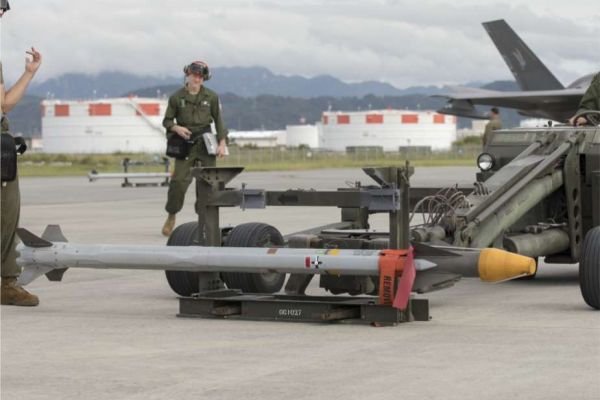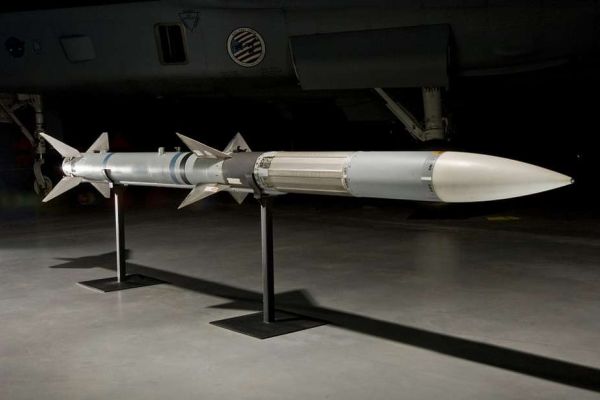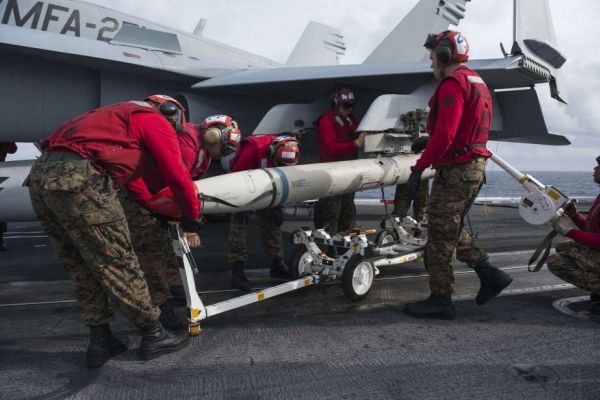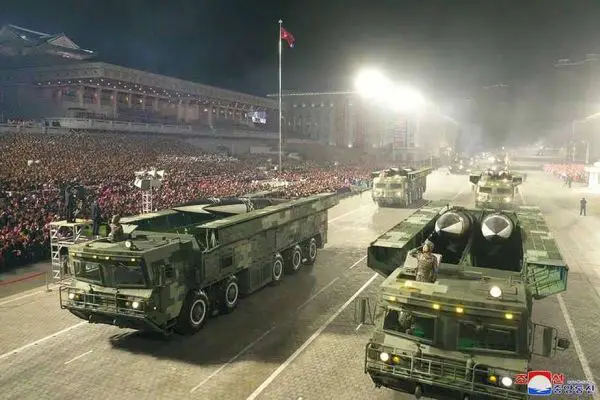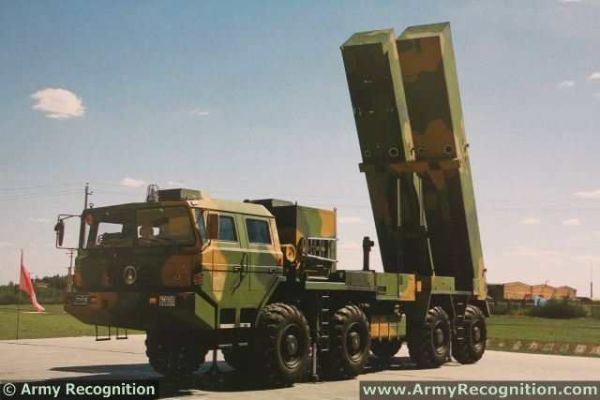Tactical Missiles.
Meteor BVRAAM Missile.

The Meteor is a next-generation Beyond Visual Range Air-to-Air Missile (BVRAAM), developed to provide air forces with a highly effective and versatile weapon for modern aerial combat. This missile is designed to address current and future threats in air-to-air combat, produced by MBDA through a collaboration between several European nations, including the United Kingdom, Germany, Italy, France, Sweden, and Spain.
Country users: Austria, Croatia, Czech Republic, France, Germany, Hungary, Italy, Qatar, Spain, Sweden, United Kingdom
Description
The Meteor is a state-of-the-art Beyond Visual Range Air-to-Air Missile (BVRAAM) that represents a significant advancement over previous missile systems, providing air forces with unparalleled capabilities in intercepting enemy aircraft. Developed by MBDA, a worldwide missile manufacturer, Meteor resulted from a multi-national collaboration between the UK, Germany, Italy, France, Sweden, and Spain, which sought to create a missile that could counteract a wide variety of evolving aerial threats. Meteor entered into service in the early 2010s and has since become a critical asset for several European air forces.
Meteor was designed to meet the evolving needs of modern air combat, where traditional missile systems often fall short in range, speed, or accuracy. With its ramjet propulsion system, advanced guidance technologies, and highly lethal warhead, the Meteor delivers unmatched performance, particularly in Beyond Visual Range (BVR) combat. It is intended for use in a variety of operational scenarios, including interception of enemy aircraft, high-speed pursuit, and countering electronic warfare capabilities.
The missile is primarily used for engaging fighter aircraft at ranges beyond the reach of conventional radar, and it excels in conditions where other missiles may struggle, such as in adverse weather or against stealthy targets. The Meteor's operational versatility is highlighted by its integration with a range of fighter aircraft, including the Eurofighter Typhoon, Dassault Rafale, and Saab JAS 39 Gripen. Additionally, the missile is being integrated into the Lockheed Martin F-35 and the KAI KF-21 Boramae, ensuring its relevance in future air combat operations.
Meteor BVRAAM missile variants:
- Standard Meteor: In service with the UK, Germany, Italy, France, Sweden, and Spain, and integrated on platforms such as the Eurofighter Typhoon, Dassault Rafale, and Saab JAS 39 Gripen.
- Meteor for F-35: Ongoing integration with the F-35 Lightning II A and B variants to provide stealth aircraft with long-range air-to-air capabilities.
- Meteor for KF-21: Planned integration with South Korea's KAI KF-21 Borama
Technical Data
-
Design
The Meteor missile has a sleek, aerodynamic design that maximizes its range and speed while minimizing drag. With a length of 3.7 meters (12 feet 2 inches) and a diameter of 178 mm (7.0 inches), Meteor is optimized for both speed and maneuverability. Its wingspan of 0.7 meters (2.3 feet) ensures that it remains stable during flight, even at high speeds. The missile weighs in at 190 kg (419 lb), making it light enough to be integrated into a variety of modern fighter aircraft. The compact design allows for easy integration with platforms like the Eurofighter Typhoon, Dassault Rafale, and Saab JAS 39 Gripen.
Meteor features rail and ejection launch capabilities, allowing it to be fired from standard aircraft missile rails or through an ejection system, providing flexibility and compatibility with a range of modern fighter platforms.
-
Warhead
Meteor missile is equipped with a highly effective blast fragmentation warhead designed to destroy or incapacitate enemy aircraft. The warhead is capable of inflicting severe damage upon impact or in close proximity to the target, ensuring that even evasive targets are neutralized. The missile uses both impact and RF proximity fuses, enabling it to engage targets with a high level of effectiveness in both high-speed pursuits and defensive maneuvers. The fragmentation warhead maximizes lethality by delivering widespread damage across the target area, ensuring a high probability of kill.
-
Propulsion
Meteor’s propulsion system is powered by a solid fuel variable flow ducted rocket (ramjet) engine, which provides continuous thrust throughout the missile's flight. This innovative propulsion system allows the Meteor to maintain high speeds over long distances, making it one of the most capable air-to-air missiles on the market. The ramjet engine ensures that Meteor remains fast and efficient even at extended ranges, unlike traditional solid-fueled missiles that lose speed and effectiveness over long distances. The missile can achieve speeds in excess of Mach 4, which significantly enhances its No-Escape Zone and makes it highly effective in intercepting fast-moving, high-performance aircraft.
-
Guidance Systems
Meteor uses a sophisticated multi-stage guidance system designed to ensure precision and flexibility in target engagement. The missile is equipped with inertial guidance for mid-course flight, which provides consistent course corrections during the missile’s flight. Updates via datalink allow for in-flight course corrections based on changing target conditions. In the terminal phase of flight, Meteor switches to autonomous terminal guidance using an active radar seeker, allowing the missile to lock onto its target and guide itself to intercept. This combination of inertial guidance and active radar homing ensures that Meteor can engage both maneuvering and high-speed targets, even in complex environments where traditional missiles might struggle.
-
Combat Use
The Meteor missile is specifically designed for beyond visual range (BVR) combat, allowing modern fighter aircraft to engage enemy targets at distances far beyond the reach of conventional air-to-air missiles. Equipped with an advanced radar seeker and network-enabled capabilities, Meteor can effectively engage a wide variety of targets in all weather conditions, including high-threat environments where electronic warfare and stealth technology are used to evade detection. Its large No-Escape Zone (NEZ), the biggest of any air-to-air missile in service, ensures that once a target enters its engagement range, the probability of a successful intercept is maximized, even against highly maneuverable or high-speed aircraft attempting evasive maneuvers.
Meteor is fully integrated into several modern fighter platforms, providing an operational advantage to air forces deploying the Eurofighter Typhoon, Dassault Rafale, and Saab JAS 39 Gripen. Additionally, it is undergoing integration onto the Lockheed Martin F-35 Lightning II (A and B variants) and South Korea’s KAI KF-21 Boramae, further expanding its global deployment potential. This wide compatibility ensures that Meteor remains a highly flexible and adaptable weapon system, capable of being deployed in various multinational operations and joint-force engagements.
One of Meteor’s key advantages is its network-centric capability, which allows the missile to receive mid-course guidance updates from third-party sources, including airborne early warning aircraft, ground-based radar, or other networked fighter aircraft. This capability enhances its effectiveness in coordinated air operations, where multiple platforms share targeting data to engage threats beyond the range of the launching aircraft’s sensors. Combined with its high-speed ramjet propulsion, autonomous terminal guidance, and lethal blast fragmentation warhead, Meteor provides air forces with a strategic edge in modern air-to-air combat, ensuring air superiority in both defensive and offensive engagements.
Specifications
-
Type
Beyond Visual Range Air-to-Air Missile (BVRAAM)
-
Country users
Austria, Croatia, Czech Republic, France, Germany, Hungary, Italy, Qatar, Spain, Sweden, United Kingdom
-
Designer Country
United Kingdom, France (MBDA)
-
Propulsion
Solid fuel variable flow ducted rocket (ramjet)
-
Launch Weight
190 kg (419 lb)
-
Range
Maximum range: 200 km (120 mi)+
No Escape Zone: 60 km (37 mi)+ -
Speed
Over Mach 4
-
Guidance Systems
Inertial guidance, mid-course update via datalink, terminal active radar homing
-
Warhead
Blast fragmentation
-
Dimensions
Length: 3.7 m; Diameter: 0.178 m; Wingspan: 0.7 m









































